
views
Push your chest out and keep your shoulder blades relaxed.
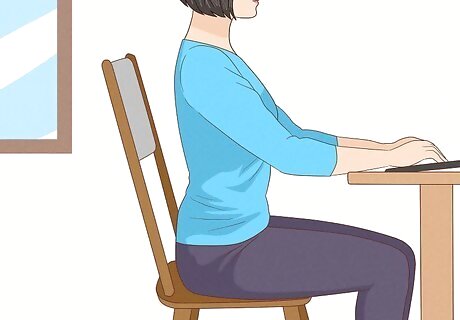
Good posture in your upper body reduces stress on your SI joints. To find good posture in a seated position, imagine a string pulling your head up towards the ceiling. Puff out your chest to exaggerate the curve in your back. Then, release the exaggerated position by about 10° for the ideal seated posture. Your upper body position affects your SI joints because the Si joints provide stability and transfer impact/motion from your upper body to your lower body.
Separate your knees slightly.
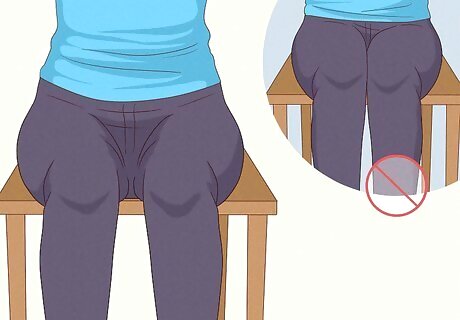
Pull your knees slightly apart to relax your hip flexors. The hip flexors are muscles that can pull on your SI joint and pull the lower spine out of alignment if they're tight. In addition to creating a gap between your two knees, keep a gap between the backs of your knees and the front of your seat to keep your pelvis from excessively tilting. Move your ankles out slightly so that they’re in front of your knees, instead of directly below your knees. Your feet should rest flat on the floor or on a footrest.
Keep your weight distributed evenly.
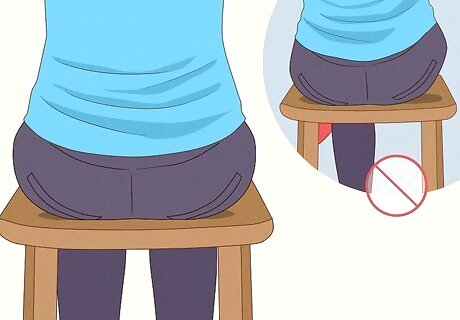
Position your hip bones so that they’re level with each other. Avoid crossing your legs to make sure one side of your pelvis isn’t tilted higher. By distributing your weight evenly, you make it easier for your SI joints to help balance and support your upper body. Bend both your knees to 90°.
Add a pad or cushion behind your lower back.
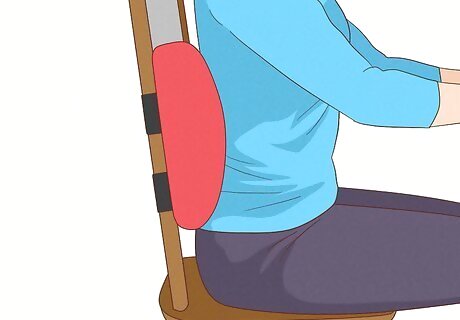
Try this out if your chair doesn’t provide enough lumbar support. Slide a rolled-up towel or cushion behind your lower back to help maintain the natural curves of your spine. The extra support of a cushion can reduce the pressure on your joints–and reduce your SI joint pain while sitting. The cushion or towel should be small enough that it doesn’t force your back into an unnatural curve.
Take frequent breaks when you’re sitting.
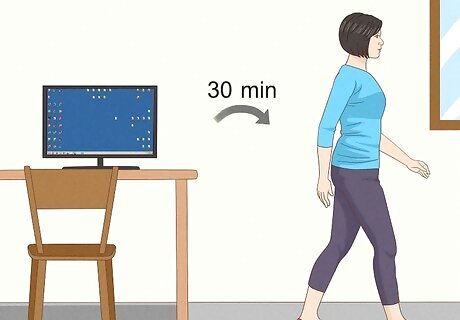
For every 30 minutes of sitting, stand for 5 minutes. Breaking long periods of sitting is proven to reduce lower back pain–one of the main symptoms of SI joint dysfunction. Taking a small break from sitting even helps reduce brain fog and fatigue. For even more activity, try going for a 15-minute walk.
Use a seated backbend to stretch your back.

Stretch as you sit to get relief from low back pain. SI joint pain can radiate down through your low back and buttocks. To get some relief, shift to the front of your chair, and reach your arms backward. Grab the back of your chair, and pull your shoulder blades back as you gently press your chest out. Hold this position for 1-3 breaths. Repeat the stretch as many times as it feels comfortable for you, but stop if you feel any pain.
Try a seated cat-cow stretch to relieve pain.
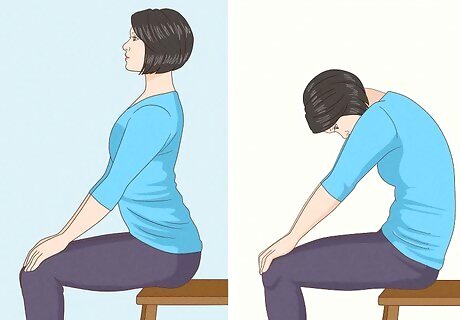
Seated cat-cow loosens up the spinal muscles that support your SI joints. Sit at the edge of your chair, with both hands on your thighs. For the “cow” movement, inhale and lift your chest and chin. Pull your shoulders down and back, away from your ears. Exhale and find the “cat” movement by pulling your belly button in, rounding your spine, and tucking your chin towards your chest. Perform 1-3 repetitions.
Twist your upper body to loosen up your spine.
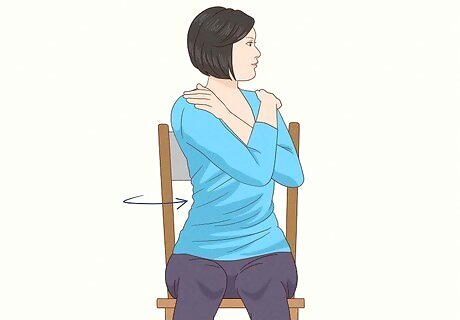
A seated upper-body twist helps your upper back flexibility. Working on your spinal mobility will help counteract the effects of SI joint dysfunction on your posture. In turn, better posture equals less pain! Cross your arms in front of your body with your hands on your opposite shoulders. Turn your upper body to the left, as far as it’ll go, for 5 seconds. Release your body from the position, and repeat the twist on the right side. Do this stretch 5 times on each side. Keep your hips in place as you do this stretch.
Use a seated toe touch to stretch your hamstrings.

Your hamstrings are one of the key muscles that stabilize the SI joints. When muscles that support the SI joint are tight or inactive, it’s easier for the joint to cause you pain. To perform this stretch while you’re seated, keep one leg bent and straighten the other so that your heel touches the ground. Lean forward to try and touch the toes of your straightened leg. If you can’t touch your toes, that’s okay! Just lean as far as you can for 10-30 seconds. Repeat the stretch on your other leg. Only lean forward enough to feel a mild stretch. Stop the stretch if you feel any pain.
Try the “tailor’s sit” if you’re sitting on the floor.

This seated stretch is especially helpful if you’re pregnant and experiencing SI joint pain. However, anyone with SI joint pain can benefit from a tailor’s sit. To sit in the tailor’s position, keep your back straight and let the soles of your feet come together. The position should look a bit like a butterfly stretch. A tailor’s sit stretches your thigh, pelvic, and hip muscles to relieve pelvic discomfort and SI joint pain. Gently lean forward for 5 seconds if you’d like a deeper stretch.
Choose a supportive office chair.
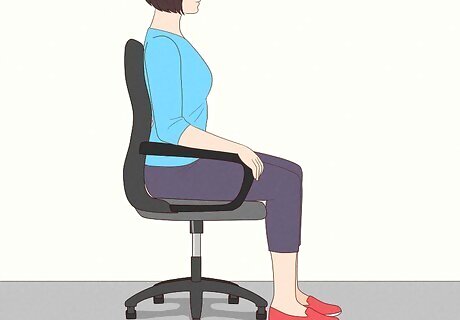
Pick a chair that supports the natural curves of your back. For instance, a good chair will offer lumbar support by curving in slightly to follow the curve of your lower back. Once you have a comfortable chair, adjust the chair height so that your knees are about level with your hips. If your chair has armrests, adjust them so that your wrists are slightly below or at the level of your elbows.
Switch to an exercise ball.
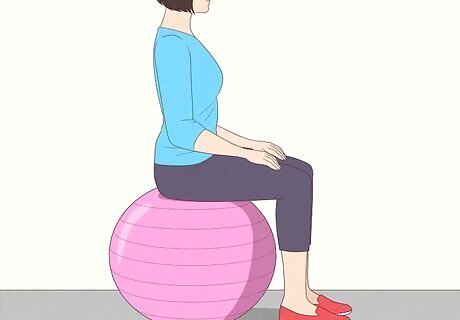
Sit on a yoga ball to take pressure off your tailbone. Plus, when you sit on a ball, your core muscles activate in order to keep you balanced. Over time, you’ll develop active stomach and back muscles to support your SI joints so the joints don’t have to work as hard.
Use a standing desk to prevent pain.
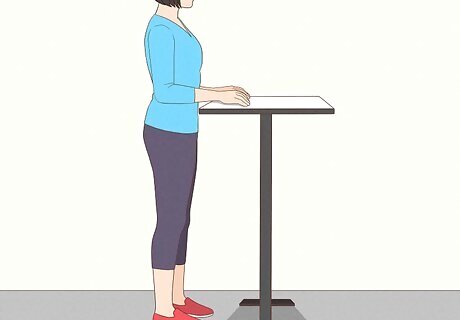
Move between sitting and standing to change up your posture. While more research is needed, some studies show that standing desks can reduce chronic low back pain by up to 50%. Set up your standing desk so that your elbows can be bent to 90°, with your wrists flat on the desk. If you’re new to the world of standing desks, ease in. Start by standing for 30-minute blocks a few times per day. Keep your head and neck aligned over your shoulders. If you’re working on a computer, you may have to raise or lower your computer screen height so that you’re not craning your neck.
















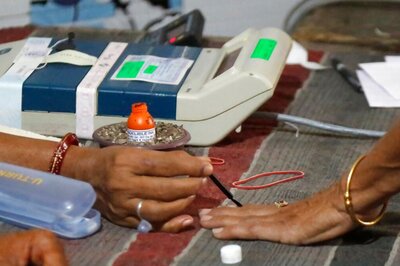

Comments
0 comment